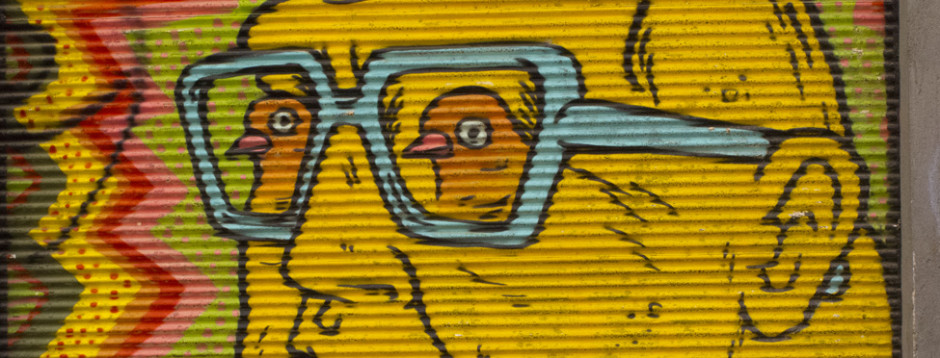posted on May 12, 2017 in Hyperallergic
In his show at Garvey Simon Art Access, Timothy Hursley presents photographic investigations into Southern funeral homes, Mormon sects, and empty brothels.

Timothy Hursley, “Joe and Sally Conforte Suite, Mustang Ranch” (1987/1991), dye transfer print, 16 1/2 x 21 in (all images courtesy of Garvey Simon Art Access)
What do the interior design of Nevada brothels, the storage caves of fundamentalist Mormons, Southern funeral homes, and Andy Warhol’s Factory all have in common? They are all part of the disquieting and beautiful photographic investigations by Timothy Hursley in Tainted Lens, currently on view at Garvey Simon Art Access in Chelsea.
Known primarily as a commercial photographer specializing in architecture, Hursley has an ongoing series of personal photographic projects that he pursues between commercial gigs. This exhibition presents a mixture of images from several of those series, including Brothels of Nevada, Funeral Homes South USA, and Polygamy/FLDS. Though disparate in location and subject matter, they all share a common thread: Hursley has taken a deep dive into off-the-grid American subcultures. These are worlds that we have seen glimpses of in the films of David Lynch, Larry Clark’s iconic book Tulsa, and the photographs of William Eggleston. But a critical difference strikes you as you stand in a room of Hursely’s photographs: There are virtually no people in his work. While the aforementioned artists — and so many others who have sought to capture bits of eccentric America — work with images of people, Hursley writes visual narratives that are devoid of them.

Timothy Hursley, “Pocahontas Arkansas” (2016), C-print mounted on Dibond, 26 1/2 x 34 in.

Timothy Hursley, “Polygamist Girls, Bountiful, British Columbia” (2010), C-print mounted on Dibond, 27 1/2 x 34 in
And what stories he tells! Some of the most moving work in the show is of empty brothel rooms, architecture designed for artificial gaiety, sex, and commerce. They are laden with heavy, hot color, garish furnishings, and utter loneliness. There are four related photos from brothels in Nevada hung next to each other that tell a short story in pictures. They all share the same decorating scheme: cheap gold furniture that, to some, might convey a dream of luxury, and light filtered through heavy red curtains drawn lazily against the desert sun. In “Girls Parlor” (1986/1990), we see the off-kilter bodies of two women on a couch — just their bodies, from neck to floor. They sit, carefully placed apart on a white couch, a space wide enough for a man to sit between them, their sagging breasts and passive flesh clothed in negligees. We peer through the base of a coffee table in “Chicken Ranch Parlor” (1986/1990). The ornate decorative golden nude women holding up the marble tabletop don’t look sexy; they look like slaves.

Timothy Hursley, “Girls Parlor Chicken Ranch” (1986/1990), dye transfer print, 16 1/2 x 21 in

Timothy Hursley, “Chicken Ranch Parlor, Pahrump, Nevada” (1986/1990), dye transfer print, 16 1/2 x 21 in

Timothy Hursley, “Kids Room, Carlin Social Club, Carlin, Nevada” (1988/1990), dye transfer print, 16 1/2 x 21 in
The image that completes the story is “Kid’s Room, Carlin Social Club” (1988/1990). Here we see three sides of a room, two painted a sickly pink and the third with the veneer of a log cabin. There is no furniture, just ubiquitous red carpeting strewn with discarded and broken toys. We don’t know if this is a place to park your children while being serviced or a “playroom” for the children of employees. Either way, the message is grim.
The gallery carefully played with color when installing this show. Immediately next to the “red” photos are two that are suffused in purple and green. “Desert Doll House” (1987/1990) is composed like a photo from an interior design magazine, looking through the doorway of one room into the eerie light of another. The far room glows with a most unnatural shade of green. Banal wood paneling and cheap white furniture appear in a haze. The outer room is in stale suburban décor, save for the fleet of kitchen timers lined up on a cabinet, waiting to be put to use by the ladies.

Timothy Hursley, “Desert Doll House, Hawthorne, Nevada” (1987/1990), dye transfer print, 16 1/2 x 21 in
The longer you look at these photos, the creepier they feel. It is with a keen sense of humor that the gallery hung Hursley’s quadriptych “Alabama Silo” (2008) next to the brothel imagery. Four photos that portray a tall grain silo in various states of deflation are an unmistakable comment on the irony of sex.

Timothy Hursley, “Alabama Silo, Hale County, Alabama” (2008), C-print mounted on Dibond, 23 1/2 x 60 in
About half the prints in the show are “dye transfer,” a photographic printing technique recognized by its deep, saturated colors. The color in these photographs is sumptuous: reds, aquas, and blues pop with hyperreal richness. Color underscores strangeness in Hursley’s interiors. Even the cooler-toned photos — shots of decidedly unsexy Mormon fundamentalist life and of funeral homes — are suffused with luscious tones. The beauty of the prints belies the deep loneliness of the worlds they portray, but Hursley documents these subcultures without judgment or comment. Despite their literal absence from each image, the occupants of these worlds are evoked with great eloquence by the spaces they have left behind.

Timothy Hursley, “Fundamentalist Church of Jesus Christ of Latter-Day Saints (FLDS) Cave, Hildale, Utah” (2007), C-print mounted on Dibond, 28
Timothy Hursley, “Fundamentalist Church of Jesus Christ of Latter-Day Saints (FLDS) Cave, Hildale, Utah” (2007), C-print mounted on Dibond, 28

Timothy Hursley, “Dog Food Factory, North Little Rock, Arkansas” (2011), C-print mounted on Dibond, 30 x 34 in
Timothy Hursley: Tainted Lens continues at Garvey/Simon Art Access (547 West 27th Street, Suite 207, Chelsea, Manhattan) through June 10.
Tags
Garvey/Simon Art Access Timothy Hursley

